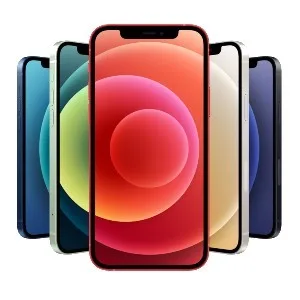Apple iPhone 12 Review
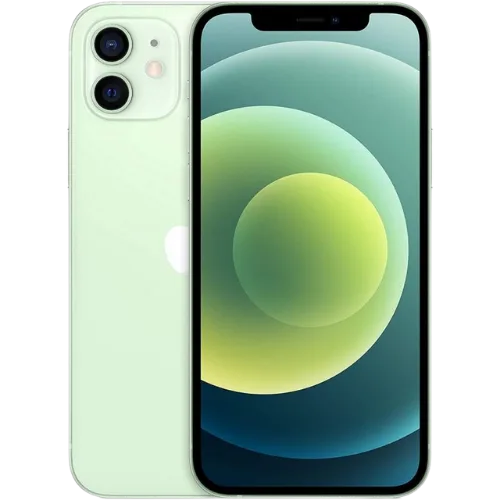
-
- Battery Score
3.5
- Camera Score
4
- Design Score
4
- Performance Score
4.5
- Battery Score
3.5
Summary
Quick verdict: Apple's iPhone 12 doesn't quite have the camera pizzazz of the very similar iPhone 12 Pro, but with better battery life and a lower price, this is the iPhone that Apple users planning to upgrade should buy.
- Camera gives better low-light shots
- Apple A14 Bionic runs ludicrously fast
- Improved Ceramic Shield glass
- Dual cameras on a flagship is a little odd
- No charger or headphones included
- Battery life is still low for a premium priced phone
Details
Pricing & Availability
| RRP | $0 |
| Launch date | 2020-10 |
In past years, the cheaper models of iPhone (excluding the deliberately mid-range iPhone SE family) have tended to be the heavily compromised models, because Apple would far rather you dropped a few extra hundred on their "Pro" model phones. This leaves consumers with a limited choice if they desperately want an iPhone but can't stump up the extra cash.
It's very easy to see where the Apple iPhone 12 differs from the iPhone 12 Pro in both technical and cost terms, but the compromises this time around – and the reality of most people's phone needs in 2020 – flip the usual script.
If you're after an iPhone upgrade, and as long as you don't need the true premium iPhone 12 Pro Max, the iPhone 12 is the phone to buy.
Looking for the latest model? Here's our review of the iPhone 13.
Design
Design
- 6.1-inch OLED display
- iPhone 4-style design
- 5 colour choices
- Ceramic shield glass
- IP68 water resistance
- No charger, no headphones
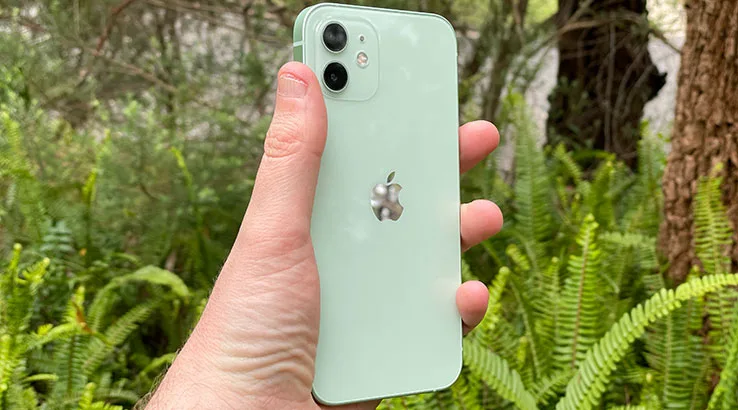
Put the iPhone 12 down side-by-side with the iPhone 12 Pro and you would be hard-pressed to tell them apart – unless you already know about Apple's new colour schemes. That's because both phones feature a 6.1-inch OLED display, with Apple having dropped LCD in everything but the iPhone SE 2020.
There's a prominent screen notch at the top to accommodate the front-facing selfie camera and FaceID cameras, with a power/Siri button on the right, volume and mute buttons on the left and, as has been the style for years now, no sign of a headphone jack to be seen anywhere.
The design of the entire iPhone 12 family owes more than a little debt to the ageing iPhone 4, with a much thicker rectangular design than last year's iPhone 11 handsets.
The iPhone 12 cuts a little price off its price by shifting from stainless steel on the iPhone 12 Pro to aluminium, but it's also got its own array of colour choices. You can get the iPhone 12 (or the upcoming smaller iPhone 12 mini) in Black, White, Green, Blue or PRODUCT(RED) finishes. I tested the Green model, which has a pale lime hue that extends onto the metallic sides of the phone itself, as well as around the rear-facing camera array.
In terms of resolution, there's no difference at all between the iPhone 12 and the iPhone 12 Pro, with a 2532x1170 "Super Retina" display. But there is a slight dip in its maximum brightness. The iPhone 12 Pro offers up to 800 nits typical brightness, where the iPhone 12 maxes out at 625 nits. In very bright direct sunlight, there's a difference there, but for most use cases, simply switching your viewing angle will make that all but moot.
One feature that was rumoured for the iPhone 12 family but that's not present on any model is a high refresh rate screen. It's stuck at a basic 60Hz, and while it's a slick enough display, coming from a slew of Android phones with either 90Hz or 120Hz displays, the drop is evident. Maybe next year, Apple?
The iPhone 12, like the rest of its family, also has Apple's new "Ceramic Shield" glass, which the company claims is capable of 4x improved drop protection. That's a nice round figure, and I did drop the iPhone 12 onto the floor a few times experimentally, but I really shouldn't have. Not because claims like that don't deserve to be tested – and before anyone at Apple calls me up in anger, it survived – but mostly because the iPhone 12 is pretty expensive, and Apple didn't supply me with a please-go-ahead-and-destroy model.
Although, if anyone at Apple is listening, I'm totally up for that if you are.
Apple's Ceramic Shield claims also only cover drops, not scratches. And some independent tests suggest that it's no better at avoiding screen marks than last year's iPhone 11 handsets.
What's more pertinent for the everyday user here, is that while Ceramic Shield should provide you with better odds in the case of an accident, it doesn't make a whit of difference to Apple's warranty expectations.
Take a broken iPhone 12 to an Apple store and, outside what's already covered by first Australian Consumer Law and then AppleCare, you'll still be up for the high costs of a broken screen, no matter what Apple says about Ceramic Shield glass.
The same is true for the iPhone 12's improved water resistance. It's now IP68-rated for immersion up to 6 metres for up to 30 minutes, but that's in fresh lab water. And in any case, if you do drown your phone, the warranty explicitly won't cover it. So… don't do that.
The actual box for the iPhone 12 isn't something I'd usually review, but anyone who has owned any previous iPhone generation will immediately notice that it's way thinner than any previous iPhone generation packaging. That's because of what you don't get this year.
Apple has stripped out the default headphones that you used to get. Your mileage may vary as to how much of a loss that truly is – and naturally, Apple would prefer that you dropped some cash on the AirPods Pro while you're at it – but it's also dropped the inclusion of an in-box charger. Again, Apple will sell them separately, and its position is that it's an environmental move to limit waste.
All you get this year is a USB C to Lightning cable, which is fine if you're charging off a modern MacBook, but less compelling if you have an older USB A type iPhone charger.
It's also worth noting that while the iPhone 12 should charge off of any compatible charger, it's vital that you ensure the charger you're using meets minimum Australian safety standards.
We've sadly seen injuries and even deaths locally from folks using cheap and dodgy chargers, so while you're not drowning or battering your iPhone, make sure you're also not shocking yourself, okay?
Camera
Camera
- Dual 12MP cameras
- Good low-light performance
- Nice video quality
- Photo specialists will still want to wait for the iPhone 12 Pro Max
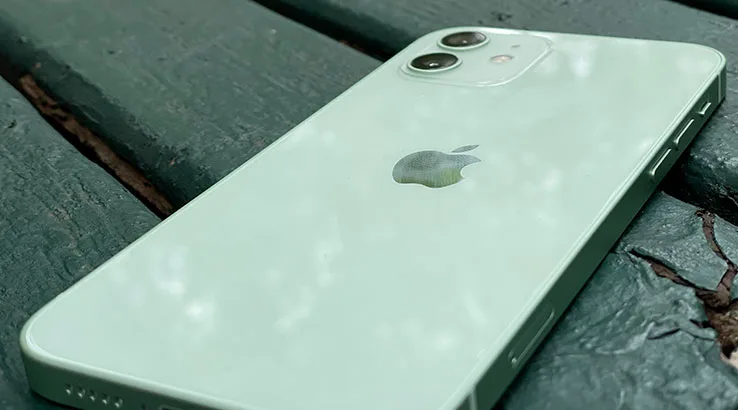
The big point of difference between the Apple iPhone 12 Pro and the regular Apple iPhone 12 is in the camera inclusions. The iPhone 12 Pro features a triple 12MP lens array, but on the regular iPhone 12, you only get a dual-lens set-up, with a 12MP f/2.4 ultrawide and 12MP f/1.6 wide lens to choose from.
What that means is that you miss out on the LIDAR scanner found on the Pro models, as well as the 12MP f/2.0 2x optical lens on the 12 Pro.
The level to which that matters equates pretty closely to quite how important you view a simple telephoto lens to be.
From a whole-of-market perspective, it's disappointing not to see it in the iPhone 12, given its price point, because for this kind of money, you can pretty easily score an Android handset with a periscopic telephoto lens if that's important to you.
But if you wouldn't be seen dead using an Android phone for whatever reason, the practical effect on your photo taking isn't likely to be huge relative to the iPhone 12 Pro.
That's simply because 2x Optical Zoom really isn't all that impressive to start with. You'll still largely get the same heavily guided photography experience using Apple's default camera app, with only the smallest of differences between the Pro and regular iPhone 12 in most shots.
Where you may see some small differences is in low-light shooting. Both phones rely on that primary wide f/1.6 sensor for massively improved low-light shooting compared to previous iPhone generations, but the presence of the LIDAR sensor does give the iPhone 12 Pro a bit of a leg up when it comes to faster focusing and cleaner low-light shots.
I can demonstrate this with some shots I took late at night at a local park with a slew of premium phones including the iPhone 12 and iPhone 12 Pro.
The lowest cost phone I had on me was the Samsung Galaxy S20 FE. Samsung's performance in low light hasn't always been what I'd want it to be, but the S20 FE shot quite well:
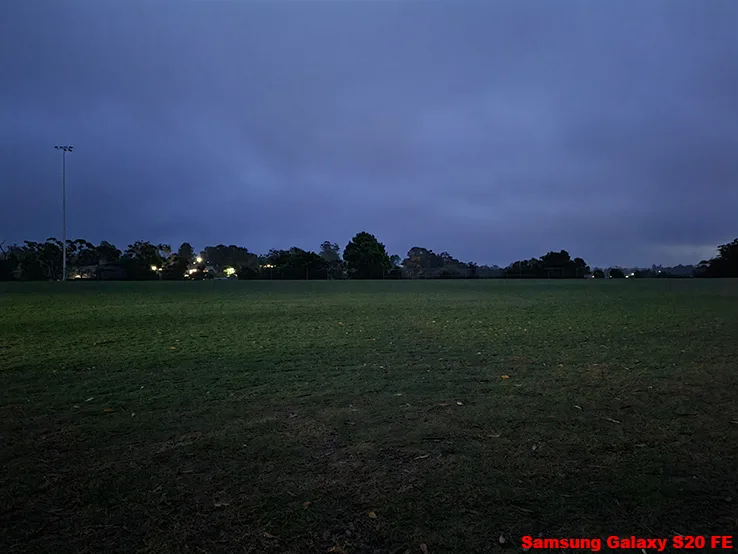
For the same money, you could score a Google Pixel 5 and rely on its AI-led low light shooting, with predictably oversaturated colour results:
![]()
This is where the iPhone 12 jumps in with its LIDAR-less shooting:
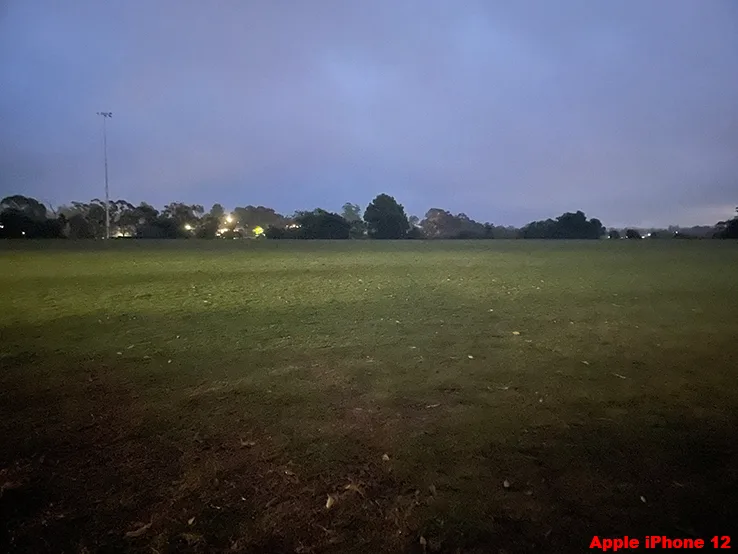
It shoots well, but the iPhone 12 Pro shoots a better and sharper image overall:
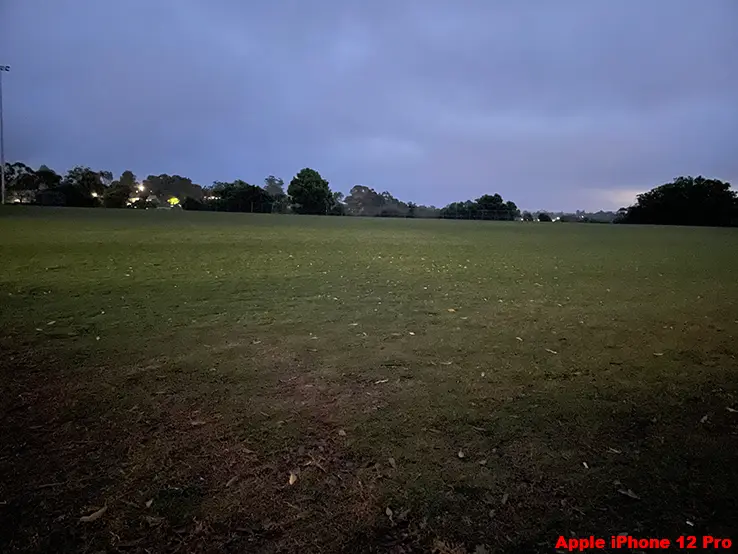
Mind you, both are outdone by the Huawei P40 Pro+:
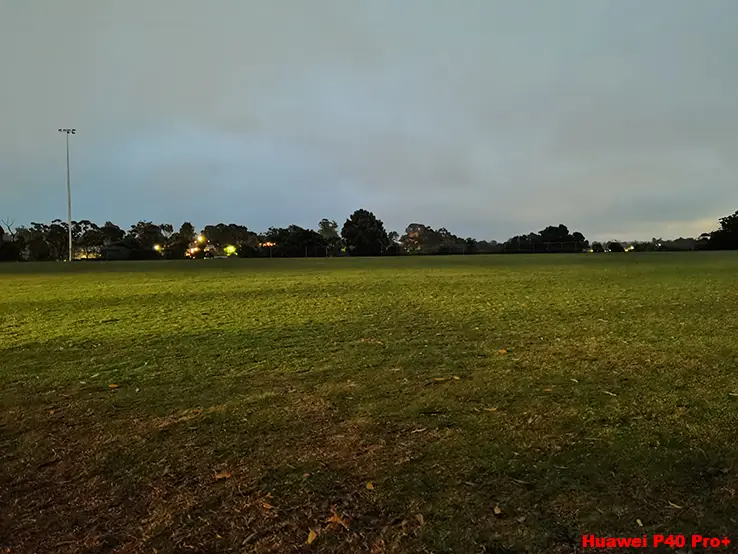
As a straight iPhone shootout, the iPhone 12 Pro does come out the victor, but I can't help but feel that the true camera phone pros will want to wait for the iPhone 12 Pro Max, which features an even better (on paper) telephoto lens and improvements in low-light performance overall.
I'll have to wait until I can compare all four iPhone 12 models to comprehensively test that, but the takeaway value for iPhone 12 owners shouldn't be that they're getting poor camera quality in low light. It's way better than any previous iPhone, and that quality with ease of shooting carries through to the general camera shooting experience.
Basically, what you're doing with the iPhone 12 is dropping its price, but in return only losing a small zoom telephoto lens and features like 60fps 4K video shooting. If you're a pro, you're probably going to want to wait for the iPhone 12 Pro Max anyway.
iPhone 12 sample photos:
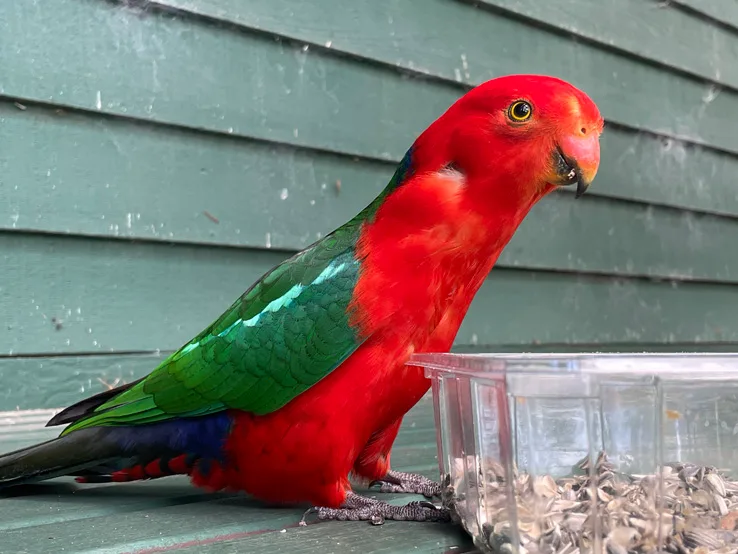
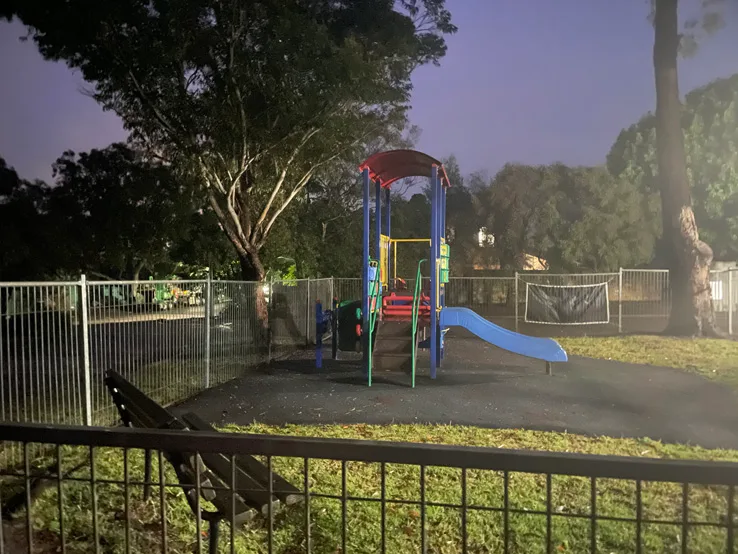
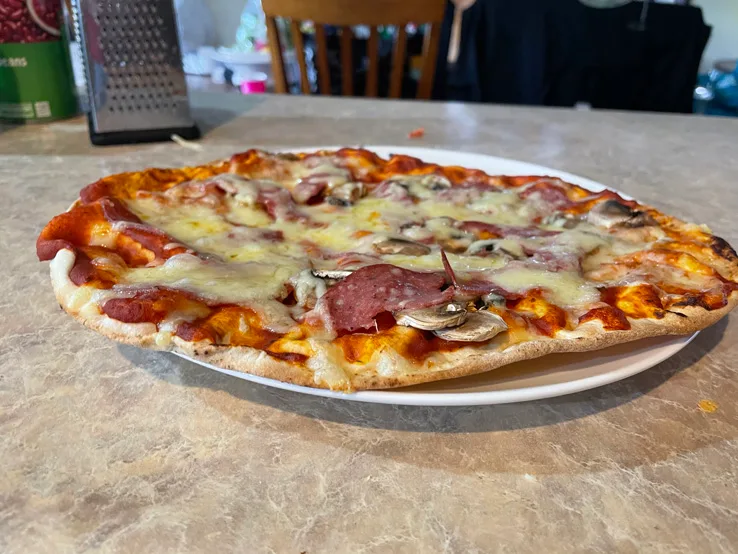



Performance
Performance
- A14 Bionic is still very fast even with only 4GB RAM
- Few apps exist to really push it hard
- 5G capable, but only sub-6Ghz
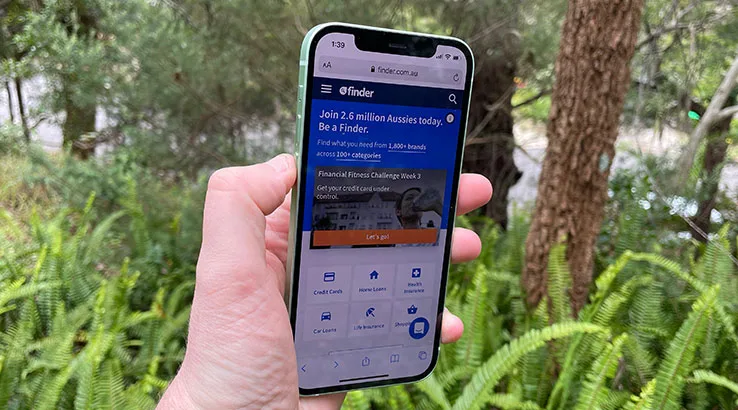
Apple's had quite a lead over rival Qualcomm and outsiders such as Huawei for raw silicon performance over the past few years. Some of that undoubtedly comes from the top-to-bottom control that Apple has not only on its silicon but also the iOS operating system that runs every iPhone. Prior to the iPhone 12's launch, the 2019 iPhone 11 Pro Max's Apple A13 Bionic was still the fastest processor we'd seen on any phone to date, including all 2020 Android flagships.
The Apple A14 Bionic that runs all of the iPhone 12 models is even faster. There's a slight dip in specifications between the Pro and the regular iPhones, with only 4GB of RAM on board, but again, you'll struggle to really hit that in a noticeable way in any day-to-day app operations.
That includes benchmarks where the iPhone 12 runs neck and neck with the pricier iPhone 12 Pro. Here's how it compares using Geekbench 5's CPU test:
And here's how it compares for graphics performance, using 3DMark's Slingshot Extreme and newer cross-platform Wild Life test. We have fewer Wild Life results to compare with, but you can easily see how the A14 ups the ante even on the flagship 2019 iPhone 11 Pro Max:
Rather predictably, you can't expand the storage on board the iPhone 12, which ships in 64GB, 128GB and 256GB variants only. That's long been Apple's play in this space, with a not-so-subtle nod towards the iCloud storage that you could score as part of an Apple One subscription.
The iPhone 12 is also 5G capable, and Apple is undeniably late to market here. Ask Apple and it will say that it's been waiting for 5G networks to mature, but the reality here is that Apple had bet on Intel-produced 5G chips that never materialised, forcing it to bounce over to Qualcomm – which it was involved in a bitter legal dispute with at the time – for its X55 modem instead.
5G in Australia currently only exists in the sub-6Ghz form from Telstra, Optus and Vodafone, and that's all you can access from an iPhone 12 if purchased in Australia.
What's slightly galling is that Apple does produce a model of the iPhone 12 for about the same money that can access both sub-6Ghz and faster mmWave networks, but in the USA only.
We won't have mmWave 5G until at least 2021 in Australia, but it feels more than a little cheap for Apple to produce a more capable model of iPhone for its home market only, especially given that many iPhone owners keep their phones for multiple years.
When the Google Pixel 5 can manage dual sub-6Ghz and mmWave in the one handset for hundreds of dollars less than the iPhone 12, one of the ways that Apple could have made good with its consumers would be to follow suit globally. It hasn't, and Australian consumers are worse off for it.
Actual 5G performance as I've noted many times before can vary widely. Testing with a Telstra 5G SIM in the iPhone 12 on the Central Coast of NSW, I was able to hit an impressive 529Mbps downstream with a 13ms ping time, although uploads were distinctly less sexy at 4.17Mps up. Wireless networks are like that, although again, we should see the real speed boosts kick in once telcos can offer full mmWave 5G networks.
Battery life
Battery life
- Relatively small battery does well for its size but not for its category
- MagSafe charging is fun
- No in-box charger
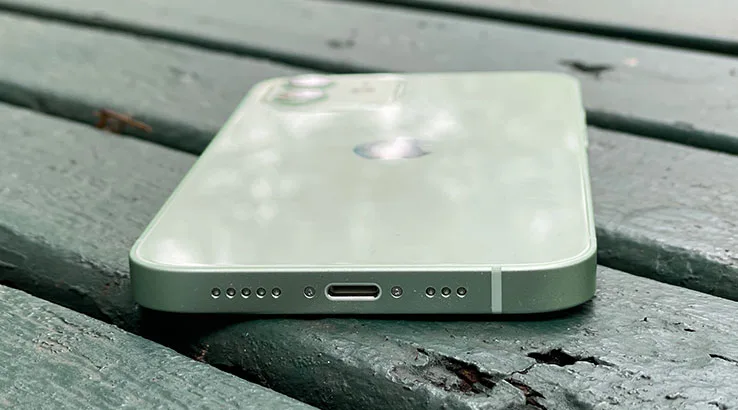
The new thicker design of the iPhone 12 has allowed Apple to add a new charging feature in the form of wireless MagSafe charging. MagSafe was the name that Apple gave to its older MacBook charging cables, which attached magnetically and dropped away nicely if somebody trod on them without sending your precious laptop to the floor. But that's not what MagSafe for iPhones does. Instead, it ensures a more constant connection to Qi chargers that are MagSafe approved. So far, that's only Apple's own in-house efforts and a few select Belkin peripherals.
MagSafe offers up to 15W wireless charging, a nice and speedy bump over the older iPhone Qi limitation of 7.5W. There's a small cool factor in it snapping into place on the iPhone 12, along with the accompanying animation onscreen to show that it's charging, and it holds the iPhone 12 well in place.
What you don't get is a bump in actual battery capacity. Apple doesn't talk specifics, but a teardown performed by iFixit reveals a 2,815mAh battery. That's actually lower than the 3,110mAh battery in 2019's iPhone 11, which is genuinely surprising.
The iPhone 12 Pro didn't knock me out with great battery life, and I was keen to see how the iPhone 12 might compare. Apple can do a lot with software optimisation, and the iPhone 12's lower brightness display should in theory give it a small edge in overall battery performance.
To test that, I ran the iPhone 12 through our standard battery test. This involves running a full-screen, Full HD YouTube video for an hour from full battery at maximum brightness and moderate volume.
What I look for here are phones that can push above the 90% remaining battery barrier, because below that is typically a sign that the phone that won't even last a single day. Here's how the iPhone 12 compared using that test:
The iPhone 12 does indeed outperform the iPhone 12 Pro in this test, but in real-world usage, it's still not a great performer if you're looking outside the iPhone family, or even within it if you take the iPhone 11 Pro Max into consideration. In more anecdotal day-to-day testing, I've been generally able to get the iPhone 12 to last a day, but not much more than that.
A day is fine, but the reality here is that the iPhone 12 is undeniably a premium flagship phone. Apple is clearly doing a lot of clever engineering in terms of optimisation, but it would be even better if it spent just a little more on battery capacity, because then its users could enjoy true premium battery life all of the time.
It could, for example, take the cash it's not spending on including power adaptors and use it to up the battery capacity on next year's iPhone 13 family. Just a thought there that you might want to consider, Apple.
Should you buy the Apple iPhone 12?
- Buy it if you want the best value iPhone 12 model in this year's lineup.
- Don't buy it if you're happier with Android or want the true Pro features of the Pro Max.
On paper, the iPhone 12 looks like the compromise model that exists to tempt you towards the Pro instead. However, that's not been my experience of testing it out, because the key features that iPhone users are likely to want are generally present.
Could Apple have included a more extensive camera array across all of its phones? Absolutely, but it didn't do so, and that means that the best bet for pro shooters is going to be the full flagship iPhone 12 Pro Max, still to be tested. There's still also the iPhone 12 mini to consider, but beyond its small form factor, there's a big question over its battery capacity and life, somewhere that the iPhone 12 outperforms its pricier Pro rival.

"I've had the iPhone 12 for a few years now and it has been a solid phone. Despite heavy use, the battery capacity is still at 87% and the camera is all I need for general use. It has not aged out as of 2024 – the updates and widgets that work with the new versions still work with it – but I expect this to change. I like how it syncs with my iPad and my Mac at work, from shortcuts to browsing."
Pricing and availability
Compare Apple iPhone 12 plans
You can also purchase the Apple iPhone 12 on a handset repayment plan from Telstra, Optus or Vodafone. This will split the cost of your new phone over 12, 24 or 36 months, and you'll get a mobile plan with it too.
Specifications
Display
Camera
Physical Dimensions
Connectivity
Power, storage and battery
Device features
Images: Alex Kidman
More Finder reviews
- Samsung Galaxy S25 Ultra review – Still an Android powerhouse
- iPhone 16 and 16 Plus review – Closing the gap
- iPhone 16 Pro and 16 Pro Max review – Shockingly good battery life
- Google Pixel 9 Pro XL review – Fantastic phone, even better cameras
- Samsung Galaxy Z Flip 6 review: Great phone held back by price
Alex Finder
Senior editor
You are about to post a question on finder.com.au:
- Do not enter personal information (eg. surname, phone number, bank details) as your question will be made public
- finder.com.au is a financial comparison and information service, not a bank or product provider
- We cannot provide you with personal advice or recommendations
- Your answer might already be waiting – check previous questions below to see if yours has already been asked
Finder only provides general advice and factual information, so consider your own circumstances, or seek advice before you decide to act on our content. By submitting a question, you're accepting our Terms Of Service and Finder Group Privacy & Cookies Policy.
This site is protected by reCAPTCHA and the Privacy Policy and Terms of Service apply.

